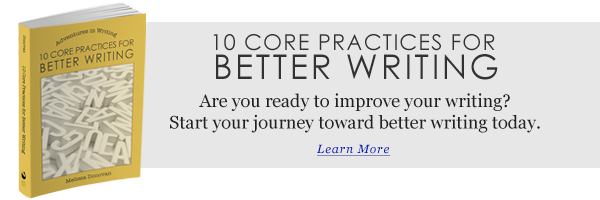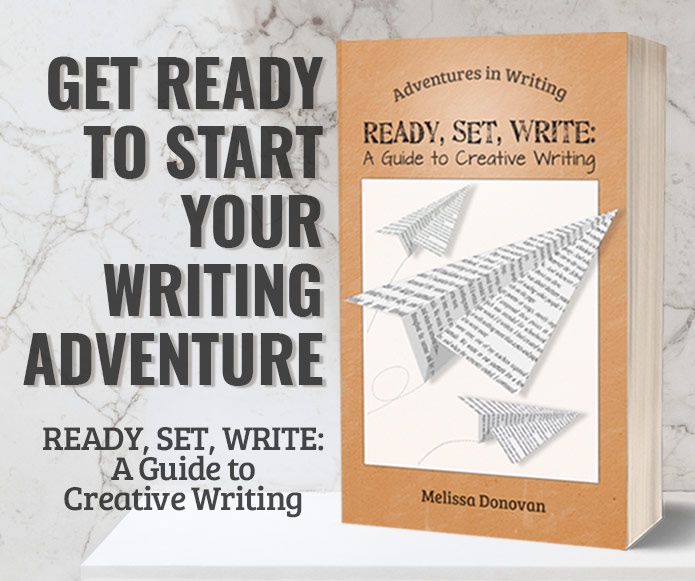This post contains affiliate links that earn commissions from qualifying purchases.
When we’re writing, we run into a lot of technical issues. Where do the quotation marks go? When is it correct to use a comma? How should titles be formatted?
Some of these questions are answered by the rules of grammar, spelling, and punctuation. But other questions are not addressed by grammar: there’s no official rule for how to format a title.
We writers need trusted resources that we can use to resolve all these issues, especially if we want to produce work that is both grammatically correct and stylistically consistent.
That’s what style guides are for. Style guides answer grammatical questions and provide guidelines for consistency.
What is a Style Guide and Should I Use One?
A style guide is a manual that establishes rules for language (including grammar and punctuation) and formatting. Within academia, these guides also provide standards for citations, references, and bibliographies. Many disciplines have their very own style guides, such as the Publication Manual of the American Psychological Association.
These manuals promote proper grammar and ensure consistency in areas where grammar is unclear. Style guides answer all those burly writing questions that are absent from the rules of grammar: Did you use a serial comma in the first paragraph, but leave it out in the third? Have you used italics in one post to refer to a book title, but in another post used quotation marks?
Basically, a style guide is an all-purpose writing resource.
If you’re serious about writing, then you should definitely use a style guide. Because a style guide’s primary purpose is to render a work consistent and mechanically sound, every project will benefit from its application. That includes creative writing, academic writing, and blogging!
In many cases, a style guide is not only appropriate, it’s mandatory. If you’re writing for submission, it’s a good idea to check a publication’s submission guidelines to see if they require writers to use a particular style guide.
By establishing these standards, a style guide will help you streamline your work. Once you are accustomed to using a particular set of guidelines, the writing process will flow more smoothly, because you won’t have to stop and deliberate on grammar and style. Your readers will be pleased too, because consistency lends to clarity.
Which Style Guide Should I Use?
There are lots of different style guides, from the The AP Stylebook to the The Chicago Manual of Style
. Which one should you use?
In many cases, the matter of which style guide to use is not up to the writer. As mentioned, publishers will provide guidelines explaining which style guide is required.
Most newspapers adhere to The Associated Press Stylebook on Briefing on Media Law (often called The AP Stylebook), whereas a small press publisher might ask you to use The Elements of Style (often referred to as Strunk and White). Professors and teachers generally require students to use the MLA Handbook for Writers of Research Papers.
What about fiction writers and everyone else?
 The most popular style guide for general use is The Chicago Manual of Style, and this is also the style guide commonly used for manuscripts (i.e. novels and anthologies). Many other writing guides are based on Chicago or will defer to it for any areas of style that they do not specifically address. It covers formatting, includes rules for good grammar usage, and provides a roadmap that ensures your work is mechanically consistent.
The most popular style guide for general use is The Chicago Manual of Style, and this is also the style guide commonly used for manuscripts (i.e. novels and anthologies). Many other writing guides are based on Chicago or will defer to it for any areas of style that they do not specifically address. It covers formatting, includes rules for good grammar usage, and provides a roadmap that ensures your work is mechanically consistent.
For general use, Chicago is by far one of the best writing resources on the market, and for me, it’s been one of the best investments I’ve made for my own writing career.
Do you use a style guide, and if so, which one? Are there other writing resources that you can’t live without? Share your favorites in the comments.






In my current writing I don’t use a style guide. Granted, my current writing isn’t meant to be treated as a serious piece of journalism, either. While in grad school we used APA style in our writing (I was a Master’s student in Higher Education Admin.).
Purdue actually has a very handy online style guide at Purdue OWL. It practically got me through grad school.
Erik, I don’t think you have to write serious journalism in order to make good use of a style guide. The emphasis on style guides is consistency in all those issues that are not addressed by the rules of grammar. If that consistency is present in your writing, then a style guide may not be of great use to you.
Chicago and APA both offer online versions through a paid subscription. As much as I love online resources, I opted for hard copies!
-Melissa
Thanks for breaking it down like this, Melissa! I am like you in that I LOVE hard copies. 🙂
I really enjoyed reading this post. You always teach your readers so much!
Smiles,
Michele
Thanks, Michele, for prompting this post, which was both challenging and fun to write. I just started using style guides a few months ago, because I felt they were necessary to the professionalism of my copywriting, and I have become a huge advocate! I don’t really aim to teach; I just want to share what I’ve learned or experienced with others!
Thanks for this article. I had been using the Elements of Style but I didn’t realize Chicago was more popular.
Of course, I haven’t really used any style manual as much as I should since it’s no longer required by a professor. Maybe using it more would be a good New Year’s resolution!
Ashley, The Elements of Style is next on my list of style guides to buy. I have a very old, outdated copy from the early 80s, and it’s high time to upgrade. Thanks for stopping by!
Depending on the situation I think I have used most of the ones listed. I own several because they were required for classes and I prefer hardcopy.
Currently on my shelf, at least what I can see from here:
AP, APA, Turabian, Elements of Style, MLA, and an unknown technical style manual. Unbelievable; and there is no Chicago because it was only required for one class and our team shared. AP gets the most use at present since my work is newspaper-focused. Maybe Chicago needs to be on my wish list.
Deb, it sounds like you have a great collection of style guides! I used to have MLA, but I can’t find it anywhere…
Hello, Melissa. Happy New Year. 🙂
I’m amidst a forced break from blogging (illness and surgery next week) so have had time to reflect on business and my personal blog.
It’s coincidental that you wrote about this now, as I was realizing I feel a lack in not using a style manual *even* in writing my personal blog.
For years any writing I did was always under a specified syle manual. The MLA was “it” for ages and then the arcane “Blue Book,” as we called it, for the law school years. I used Elements of Style as a general reference when I occasionally wrote outside the predetermined style spheres…
I didn’t think I’d want to bother for my personal blog. Really. I have no pretensions to being a freelance writer in the usual sense. As time went on I noticed the pauses for choices, and see that my blog is horribly inconsistent as well. The guides really help! They aren’t the additional burden I thought of them as when they were enforced. It’s time to get a current hard copy (of course) of whatever guide — but I can’t make up my mind.
This article helps quite a bit, thank you. I have narrowed it down to two, at least. An updated Elements of Style would probably do the trick. I wonder why the Chicago is that popular? I am very glad to have found out it is, thanks.
The Chicago guide is much longer, isn’t it? I’d love to read any observations you have comparing the two if you end up having them both… By the way, I always have used the final comma before the conjunction in a series. I don’t think I could accept a guide that dictated the opposite. 🙂 How we get stuck in our ways!
Essie
Essie,
Chicago is huge, enormous. It’s almost 1,000 pages, while my ancient copy of Strunk & White isn’t even 100 pages. I figure that’s a good indication that Chicago will answer just about any style question I may ever have. Also, since I do copywriting for clients, it helps to have a guide that covers every issue imaginable.
When I get the latest edition of Elements, I’ll definitely write up a comparison, since these two are most popular for general writing.
Thanks, Essie!
I have “The Elements of Style” but I haven’t actually read it cover to cover yet. *hangs head* It sounds like I could benefit from reading the book and getting the “Chicago Manual of Style” too.
One question: Is it difficult to find what you need in the 1000 pages?
Despite not having read “Elements”, I was able to find the section about comma use I needed. Of course, glancing at the table of contents leads me to think the book is not particularly all-inclusive.
I’ve found I tend to do things consistently with my writing out of habit. It would be great to learn a specific ‘style’ so that I could adapt to those techniques. While glancing through Strunk and White’s today I’ve already discovered things I do that could be improved upon.
Thanks for the thought provoking and informative post, Melissa!
Rebecca, I haven’t had any trouble finding anything in Chicago. It has an easy-to-use index, and it covers just about every style issue imaginable. I find it to be an invaluable resource, which is why it’s featured here at Writing Forward this month. I’ll have to get Elements sooner rather than later. My copy is actually the one my mom bought for me in sixth grade for my very first term paper. It’s ancient, but ah, the memories!
Thanks for the article, Melissa. I recently bought the Chicago Guide for my husband who is finishing his 5th book. His publisher recommended it. But he refuses to do the footnotes properly, so I’ll leave it between him and his editor.
However, I’m finishing my own memoir, and have already used it several times.
I just got some edits back, and I am glad I had Chicago on hand, because my editor made references to it when she cited reasons for her revisions. I could have just accepted the revisions, but I was able to see which guidelines she was following, and I found that informative.
I use The Chicago Manual of Style. Sharing your post.
Thanks for sharing it, Bette!